-
Your shopping cart is empty!
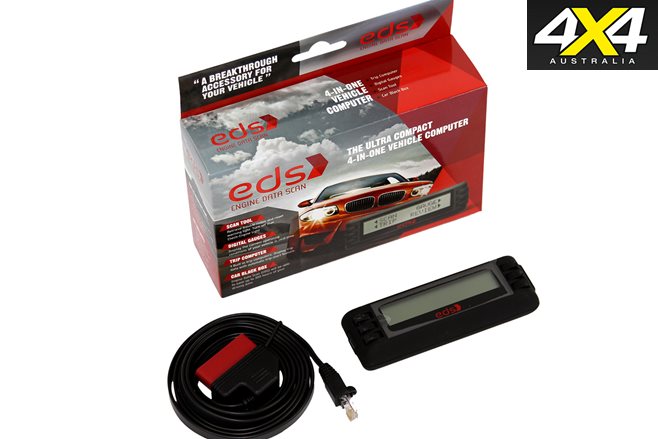
LIFE used to be simple. In years gone by, the old carby could be blown out at the roadside for a quick fix. With a bit of ingenuity, luck and mechanical know-how there wasn’t much car owners had to do to get the old girl running again.
These days it’s not quite that easy. Like them or not, the electronically controlled engine is here to stay, well for the near future anyway. While they might have made modern 4x4s more reliable and powerful than ever, when something goes wrong it’s often not a bush-mechanic fix that’s called for. It’s a trip to a qualified mechanic – probably on the back of a tow.
For all those troglodytes out there, we’ve tested an Engine Data Scan tool that is used to diagnose mechanical gremlins. Navigating the ins and outs of engine-performance upgrading is a bit of a minefield, so we’ve also fitted a DPChip to our Troopy to maximise engine performance.
Let’s see how the new tech fared.
MANY of us wouldn’t have the faintest idea on how to diagnose or fix a late-model 4x4 breakdown, but there is a simple and relatively cheap way to get roadside answers. An Engine Data Scan (EDS) tool can help with all manner of mechanical mysteries. The EDS simply plugs into your on-board diagnostics (OBD) port which allows monitoring of most engine controls, as well as other parts of the vehicle. While you may not get going again like you used to, you can at least find the problem and potentially reset the error code to get your steed rolling to the nearest mechanic.
Be warned, though; simply erasing an error code is not fixing the problem, just masking it to get you going again. Depending on the fault, a proper repair should be sought as soon as possible.
Aside from reading error codes the EDS also allows for reading real-time information from the vehicle, such as RPM, vehicle speed, fuel-system status, engine-coolant temperature, fuel pressure, intake manifold absolute pressure (MAP), calculated load-value, ignition timing, intake air temperature, absolute throttle position, battery voltage, fuel usage, oxygen-sensor output voltage and air-flow rate, as well as a few others depending on vehicle type.
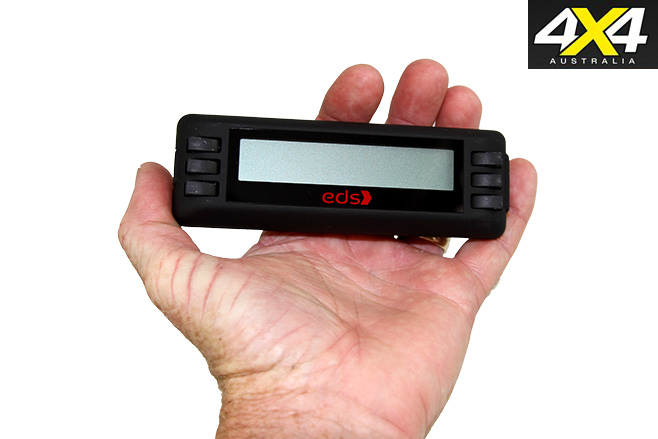
Car-specific diagnostic trouble codes (generally beginning with P1xxx) can be downloaded and printed via enginedatascan.com. I’ve printed the list for my V8 diesel Troopy (to keep in the glovebox) and while some are self-explanatory and easily fixed, I’ll admit some are bamboozling and can even be way over my head.
The kit includes: an EDS vehicle-specific computer, Velcro mounting strips, a comprehensive user manual and quick-start guide, and a six foot detachable cable to make installation easy. The kit is so simple that it only took my fumbling fingers about 10 minutes to plug, fix and run the wires without any tools. The unit derives power from the OBD port, so you won’t be cursing the old “batteries not included” sticker.
After initialising the unit, the most time-consuming part is setting up the trip computer and fuel-usage modes. After that there is nothing else to do, other than choose which of the four parameters you’d like to view on the screen. The EDS powers up each time you turn the ignition on, providing vital information if something goes wrong out on the road.
It is one thing to have a diagnosis for why your pride and joy suddenly developed all the velocity of a slow-moving tree, but fixing that problem is another matter altogether.
EDS Available from: www.enginedatascan.com
RRP: $99.00
We say: Great for all late-model 4x4s.
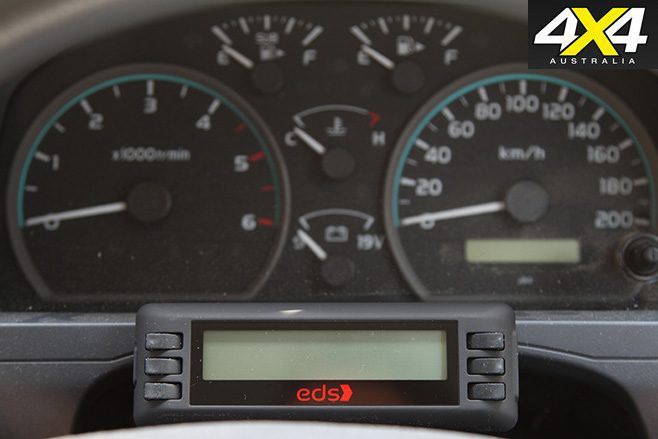
TOYOTA-SPECIFIC TROUBLE CODE
Code Description
P1100 BARO Sensor Circuit
P1120 Accelerator Pedal Position Sensor Circuit
P1121 Accelerator Pedal Position Sensor Range/Performance Problem
P1125 Throttle Control Motor Circuit
P1126 Magnetic Clutch Circuit
P1127 ETCS Actuator Power Source Circuit
P1128 Throttle Control Motor Lock
P1129 Electric Throttle Control System
P1130 Air/Fuel Sensor Circuit Range/Performance (Bank 1 Sensor 1)
P1133 Air/Fuel Sensor Circuit Response (Bank 1 Sensor 1)
P1135 Air/Fuel Sensor Heater Circuit Response (Bank 1 Sensor 1)
P1150 Air/Fuel Sensor Circuit Range/Performance (Bank 1 Sensor 2)
P1153 Air/Fuel Sensor Circuit Response (Bank 1 Sensor 2)
P1155 Air/Fuel Sensor Heater Circuit (Bank 1 Sensor 2)
P1200 Fuel Pump Relay Circuit
P1300 Igniter Circuit Malfunction - No. 1
P1310 Igniter Circuit Malfunction - No. 2
P1335 No Crankshaft Position Sensor Signal - Engine Running
P1349 VVT System
P1400 Sub-Throttle Position Sensor
P1401 Sub-Throttle Position Sensor Range/Performance Problem
P1405 Turbo Pressure Sensor Circuit
P1406 Turbo Pressure Sensor Range/Performance Problem
P1410 EGR Valve Position Sensor Circuit Malfunction
P1411 EGR Valve Position Sensor Circuit Range/Performance
P1500 Starter Signal Circuit
P1510 Boost Pressure Control Circuit
P1511 Boost Pressure Low
P1512 Boost Pressure High
P1520 Stop Lamp Switch Signal Malfunction
P1565 Cruise Control Main Switch Circuit
P1600 ECM BATT Malfunction
P1605 Knock Control CPU
P1630 Traction Control System
P1633 ECM
P1652 Idle Air Control Valve Control Circuit
P1656 OCV Circuit
P1658 Wastegate Valve Control Circuit
P1661 EGR Circuit
P1662 EGR by-pass Valve Control Circuit
P1780 Park/Neutral Position Switch Malfunction (Only For A/T)
EVERYONE, it seems, is a self-proclaimed ‘expert’, all too happy to dish out their advice to an open ear (wanted or not). While I’m sure some of the ‘newer’ experts could provide a perfectly good and safe engine performance upgrade, handing over my pride and joy to someone who hasn’t been in the game for long enough to know the ins and outs isn’t something I can do.
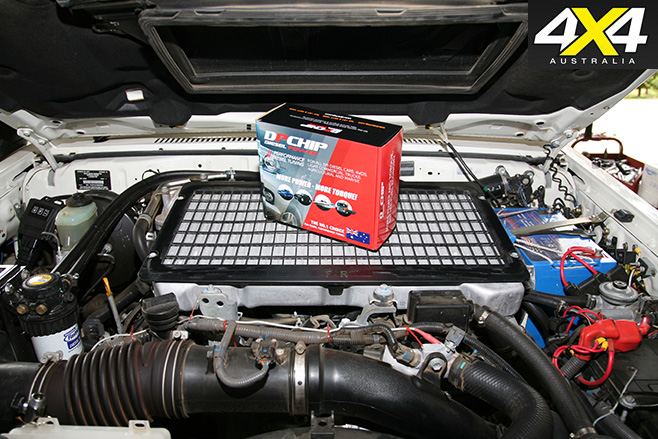
Sure, the younger set tend to be more up to date with all things electronic than the older generation, but I still wonder if some young’uns totally understand the ramifications when they go fiddling about with the electronic workings of a common-rail turbo-diesel engine.
Given my own exhaustive research on upping my Troopy engine outputs I’ve gone with the tried and tested, albeit slightly conservative, DPChip. It’s a simple plug-in electronic computer module that has been individually programmed for my vehicle to alter the fuel, timing, boost, pressure and air characteristics for safe, upgraded performance returns across a wider power band. No expensive ECU flash tunes, no fancy remaps and no outlandish claims of clutch-destroying power upgrades. The DPChip module plugs into the existing wiring harness and took Andrew Leimroth of Berrima Diesel only a couple of minutes to install.
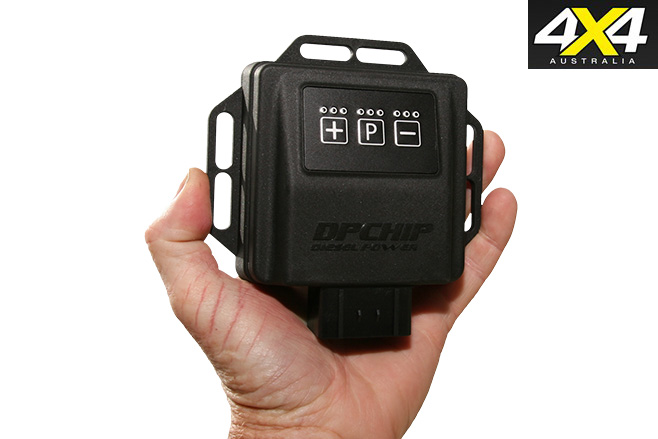
Given Berrima Diesel, the creators of the DPChip, have been in the diesel-engine game since 1956 (Reinhard Leimroth was trained by Robert Bosch) and offer a six-year warranty on its power modules, as well as factory-backed driveline warranty and a 60-day money-back guarantee, there’s a lot to be said for assuaging any fears of mystical electronic gremlins causing limp-home modes that we often hear of from other systems.
With the DPChip living downstream of the factory ECU, all engine safety modes are left intact. If something goes wrong then all standard factory engine fault codes will activate, uninterrupted by the mod.
The chip is user-adjustable and can be used to increase power at the expense of fuel usage. However, out-of-the-box settings and improvements are more than adequate.
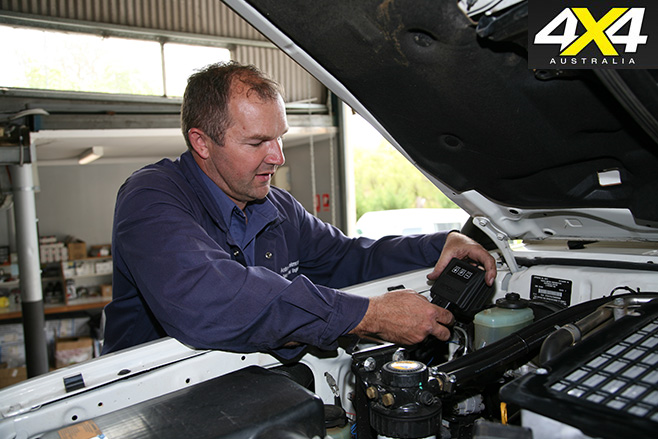
Before and after dyno runs show the DPChip-enhanced Troopy pumping out an extra 106.1Nm at its peak and about 100Nm more across the useable rev range. While the actual percentage increase isn’t quite up to the maximum claims of “up to 25 and 35 per cent”, my engine’s output of 747.5Nm and 131.0kW at the rear wheels – in combination with a three-inch mandrel-bent exhaust – has sure made a notable driving difference.
Before we get into how improved the drive is, we need to understand this is a commercial 4x4 with low gearing, a manual gearbox and low-revving engine; not an auto, high-revving passenger or SUV-type 4x4. Given that, we simply can’t expect to be shaving huge amounts of time off quarter-mile runs. While there is more urgency in the initial acceleration, it’s the added torque that comes into play once you’re up and rolling that has made a huge difference to this Troopy.
My roll-on times (60-100km/h and 80-100km/h without changing gears) have improved massively – a result of the higher torque. Being able to hold a higher gear on the freeway, around town and while towing is easily done and is the advantage of having more torque to play with.
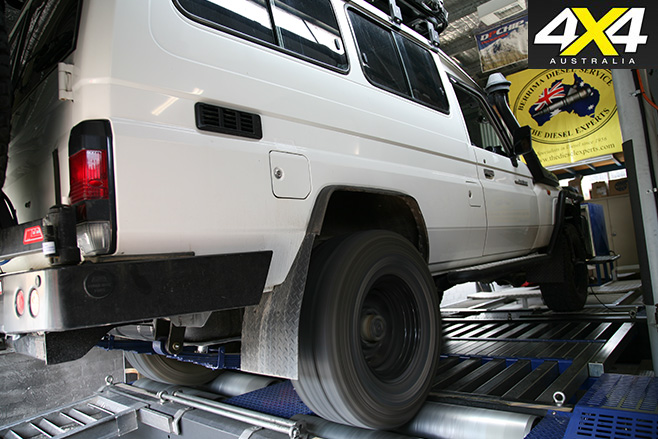
As diesel prices rise, so does the importance of fuel consumption. Now that we’ve increased our power output, fuel economy is bound to suffer.
From my first five tanks of fuel (at about 500km per tank load) my first tank returned abysmal fuel economy – a reality of about 3.0L/100km worse off (although this may have been more because of my lead foot until the novelty wore off).
After filling the tank twice more, I took a more sensible approach to my driving and allowed the engine to take advantage of the extra torque without over-revving it all the time. No loutish driving and no stomping on the loud pedal at every chance, and I was rewarded with pre-DPChip fuel economy. Using that higher torque at lower revs and in higher gears without over-loading the engine is the only way you’ll achieve improved fuel consumption – despite being less fun.
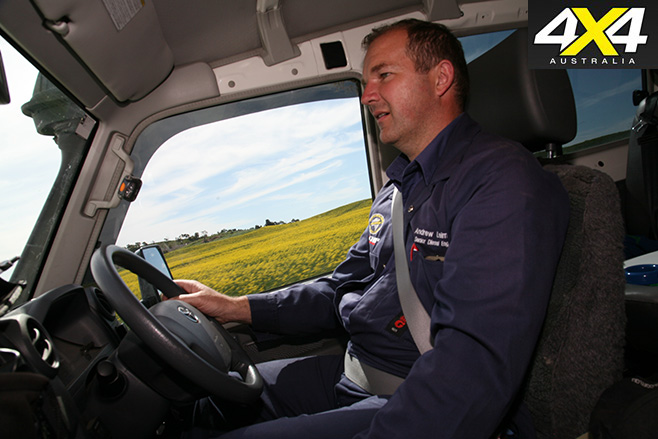
For my final tank I drove like a grandmother. Forgoing my usual ‘hurry up and wait’ approach, I dropped back by five to 10km/h, took off gently and got honked a few times by impatient drivers. Despite the indignity of being called a Sunday driver, my resulting fuel consumption of 3.0L/100km better off brought a smile to my face and a welcome reprieve to my hip pocket.
The improved torque at lower revs for towing, easier long-distance touring and similar-to-slightly better fuel economy is great, especially when you consider this isn’t a backyard job liable to destroy your pride and joy.
DPChip Available from: www.berrimadiesel.com
RRP: Varies
We say: Simple way to get power!